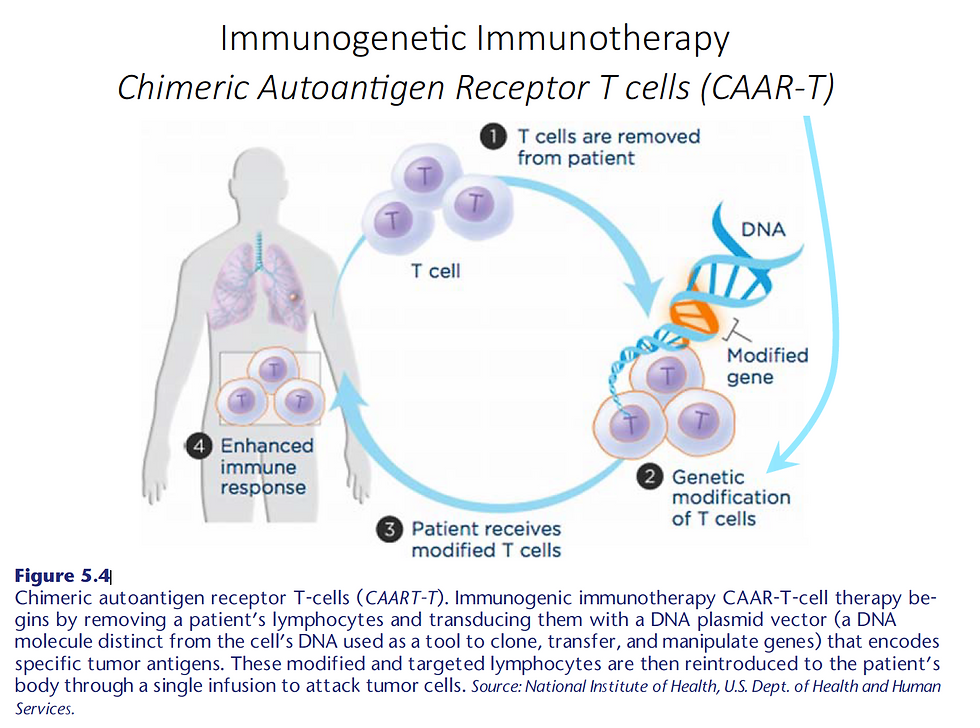Blog #25: Immunotherapeutic procedures (Part 4: CAR-T & CAAR-T cell therapy)
- louiscatania
- Nov 28, 2022
- 2 min read
Updated: Jan 7, 2023
Chimeric antigen receptor T cells (CAR-T cells) are T cells that have been genetically engineered to give them the new ability to target a specific protein. The receptors are “chimeric” meaning they combine both antigen-binding and T-cell activating functions into a single receptor. The initial premise of CAR-T immunotherapy is to modify T cells to recognize cancer cells to more effectively target and destroy them (more on this to be discussed in Blog #27 on cancer). Similar to cancer treatment by targeting tumor-associated antigens expressed on the surface of tumor cells, CAR-T cells are now being modified to treat autoimmune diseases by targeting specific autoantigens or antibodies. This type of CAR-T cell immunotherapy is referred to as chimeric autoantibody receptor T (CAAR-T) cell and CAR-Treg (targeting Treg cells [from Blog #5] to help regulate and suppress immune activity) based on the suspected autoimmune disease.

CAAR-T-cell immunotherapy (Figure 5.4) begins by removing a patient’s T lymphocytes and transducing them with a DNA plasmid vector (a DNA molecule distinct from the cell’s DNA) and engineered to include a manipulated or cloned gene sequence or autologous stem cells targeted for an autoantigen. These modifying T cells are then transferred back into the patient’s bloodstream through a single infusion (Fig. 5.4). The modified lymphocytes begin to enhance the patient’s immune response by targeting the autoantigen protein. Known as autologous CAAR-T-cell therapy, this treatment is showing promising results in numerous autoimmune diseases. A similar process will be presented in Blog #32 on cancer treatment using encoded tumor antigens to elicit a targeted immune response to a cancer.
Discussion Questions:
By definition, chimeric antigen receptors T cells combine both antigen-binding and T-cell activating functions into a single receptor. How are they used in autoimmune diseases and cancer?
CAR-T and CAAR-T cell gene replacement] therapy certainly sound similar. What is the difference and what conditions does each procedure address (give examples)?

댓글